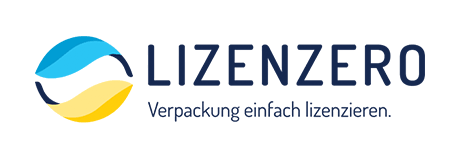VerpackG: What is product packaging?

In addition to the new obligations introduced by the German Packaging Act (VerpackG), the law also introduced many new terms, which often do not explain themselves at first glance. One of these terms is the so-called "sales packaging": Initial distributors are obligated to license the sales packaging they put into circulation for a fee through system participation and thus to co-finance the disposal and recycling process of the packaging waste arising from this.
Service, shipping and product packaging as well as outer packaging are counted to the upper category of sales packaging. We explain what exactly a shipping packaging is in this blog post.
But what about the product packaging? What are its characteristics? What materials is it made of? And how does it differ from the outer packaging? In this second part of our series you will read all the important information about product packaging.
Content
- What is a product packaging?
- What material is product packaging made of?
- In comparison: What characterizes an outer packaging?
- Special features of product packaging with regard to the German Packaging Act
- Review: All VerpackG obligations at a glance
What is a product packaging?
A product packaging is used to protect the goods it contains and is typically sold to the private end consumer. In addition, it often prolongs the lifetime of a product, since such packaging protects it from external influences. They are also used to inform the consumer about certain contents or special advantages of the product, and through special design, branding, etc. they serve as an important communication and advertising space in the direction of the end consumer.
In addition to standard product packaging such as yoghurt pots or pasta bags, which everyone knows from the supermarket, jars, which are used for example to sell jam in a farm store, are also considered product packaging. This type of packaging is one of the most common types of container, as almost every product is wrapped in it.
After buying and consuming the product contained in it, the private end consumer disposes the product packaging at home. It is then collected, sorted and recycled - organized by the dual systems. According to the German Packaging Act, product packaging is therefore considered to be packaging that must participate in the system and must be licensed for a fee by the company placing the packaging on the market in a dual system.
What material is product packaging made of?
As diverse as the products that are protected by product packaging can be, so can the materials used for packaging: from plastic yoghurt cups or milk cartons made of composite materials to glass wine bottles.
Especially important: The packaging law does not prescribe minimum volumes, nor does it exclude any materials from the obligation to participate. So as soon as a company fills and then puts product packaging into circulation that is ultimately disposed of by a private end consumer, the company must comply with the obligations of the German Packaging Act and license the packaging.

In comparison: What characterizes an outer packaging?
In addition to product packaging, there is so-called outer packaging, which is also used to protect a product. However, outer packaging does not "wrap" the product directly, but rather encloses an existing packaging.
A simple example is a six-pack of beverage bottles: while the plastic bottle itself protects the beverage from external influences (= product packaging), the plastic cover serves to hold the six bottles together and at the same time ensures that the bottles do not break (= outer packaging).
Note: Since the private end consumer receives all packaging as a sales unit and disposes it at home after consumption, outer packaging must also be licensed according to the German Packaging Act.
Special features of product packaging with regard to the German Packaging Act
A product packaging must be licensed by the company that fills the packaging and then puts it into circulation. This is usually the producer of the product or a filling company that refills large containers into standard commercial units and then sells them.
But please note: The obligation to provide proof in an inspection always lies with the company that sells the product directly to the private end consumer and thus hands it over to him. Therefore, companies should always be able to document that the product packaging has already been licensed by the manufacturer.
Review: All VerpackG obligations at a glance
Since January 2019, all companies that place sales packaging on the market must fulfill a total of three obligations under the German Packaging Act:
- Initial distributors of packaging must register with the Central Agency Packaging Register in the publicly visible register LUCID (= registration obligation). You can read in our LUCID manual how you can easily register.
- In order for companies to participate in the recycling of packaging waste, they must pay a license fee to one of the dual systems (e.g. Interseroh+ with the online store Lizenzero) (= obligation to participate in the system). After registration in the LUCID packaging register, each company receives a registration number, which in turn must be given to the dual system in order to link the two bodies with each other.
- Finally, companies must record the licensed packaging volumes and the name of the dual system in the LUCID account. This obligation to report data applies continuously: The data that a company reports to the dual system must always match the data in LUCID, as the data records are regularly compared.
To simplify the double data reporting you can use our volume download for LUCID, which will not only save you time but also a lot of trouble.
Important: In case of an incomplete or incorrect compliance with the obligations, sanctions such as high fines or sales bans can be threatened.




